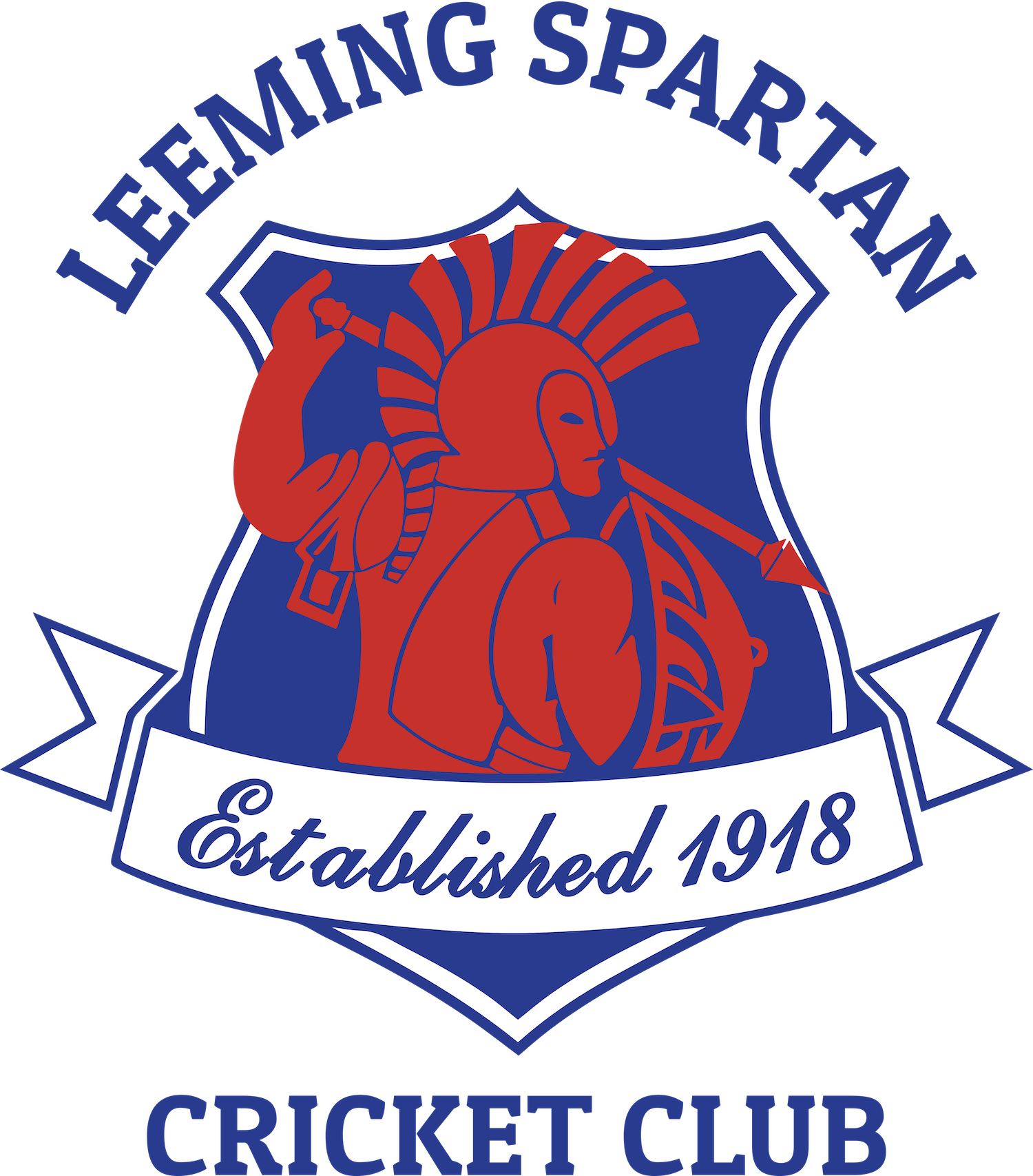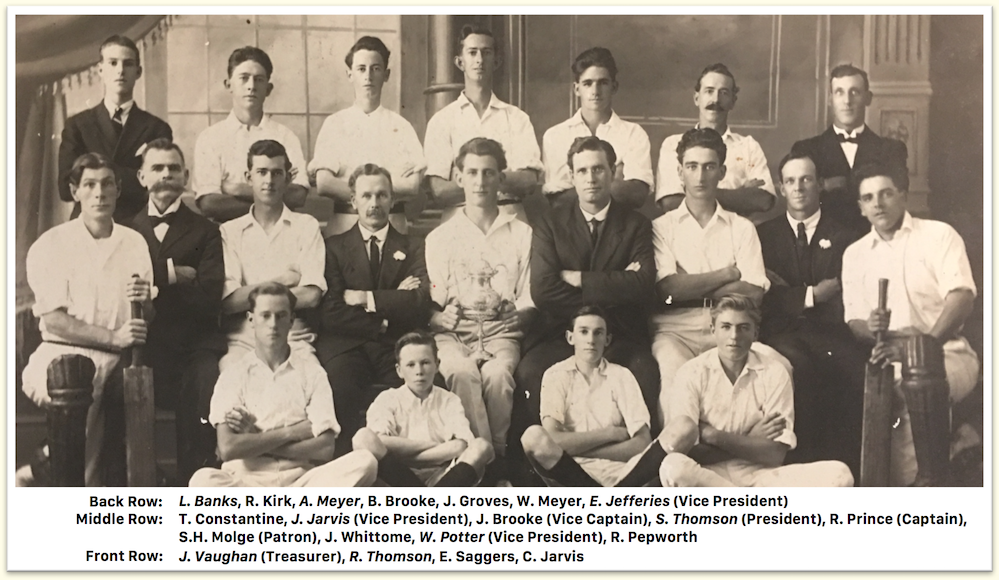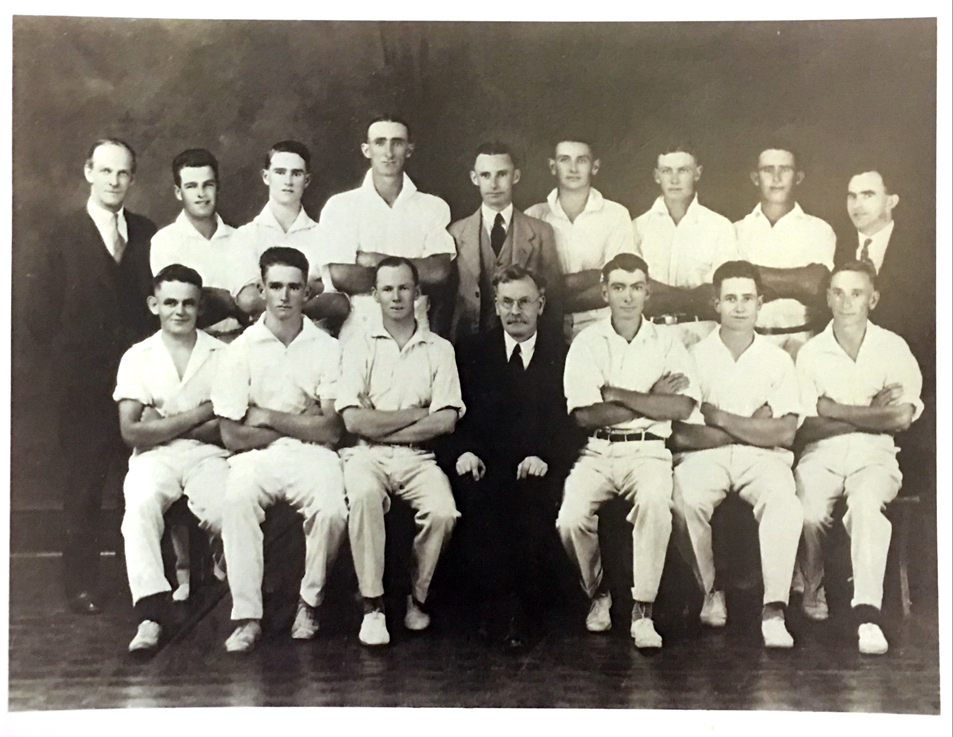Formation Of The Spartan Cricket Club
The game of cricket has always been a major sport in Fremantle, and as a consequence, it has spawned many cricketing associations and an incredible number of clubs – but only ever one to use the Spartan name!
The Spartan Cricket Club was formed in mid-1918 by the Pastor of the Church of Christ in Fremantle, the Reverend W.R. Hibbert, with the aim of re-intergrating the young men returning from the First World War back into society.
We played our first season in 1919 in what was called the Churches Association, a collection of clubs and teams, who, for the first time since the First World War ended, were playing in organised competition.
Page Contents
The first recorded association was The Fremantle Senior Association which was formed in 1894/95. This association was replaced by the Fremantle Cricket Association in the 1895/96 and 1896/97 seasons.
This body was replaced in turn by the Fremantle & Districts Mercantile Cricket Association (The F&DMCA), and was formed by clubs representing many of Fremantle’s leading businesses and industrial establishments. The F&DMCA had a chequered career until 1914 when like most sporting associations in Western Australia it went into recess because of the Great War.
However, the association was reconstituted in 1919, although it lost its mercantile connections during the 1980’s.
Interestingly, with the collapse of the Churches Association in the late 1920s, the Spartan Cricket Club would join the F&DMCA. It played in this association until the 1990s.

Reverend W.R. Hibbert, the man who founded the Spartans.
With the close of the Great War, the Church of Christ in Fremantle decided to form a sporting club with the aim of getting the young men of the district back to a normal way of life as soon as possible.
The Pastor of the Church, the Reverend W.R. Hibbert, was the man principally responsible for the early organisation and under his guidance a football team, a cross- country running team and a cricket team all came into being.
Mr Hibbert spent some time deciding on a name for the club, seeking one that would suggest a tenacity of purpose, and would encourage all club members to always give of their best.
After the Club had been competing for twelve months under the banner of The Church of Christ Sporting Club, Mr Hibbert settled on the name Spartan in honour of the Greek tribe of history and legend whose people had performed superhuman feats of endurance and toughness that have never been equalled.
With that, the Spartan Cricket Club had been formed.
The cricket team began playing in December 1918, and although they played on a regular basis it was in a rather loose collection of clubs playing with the Fremantle Matting Association which was run by the Military Garrison in Fremantle.
We first entered an organised competition in November 1919.
Cricket, like most sports, took some time to get re-established following the horrors of the war, but by the time of the 1919/20 season, there were three competitions active in the greater Fremantle area.
These were the F&DMCA, The Fremantle Matting Association, and The Fremantle Churches Association with the Spartan Club naturally affiliating with the latter.
“Formed as the Spartan Cricket Club, the team began playing in December 1918 in Fremantle, Western Australia, although it took time for an organised competition to emerge following the Great War.”
Once the Club was up and running, the Reverend Hibbert withdrew from the Club’s Committee, and was succeeded as President by Mr. Stuart Thomson JP, the Mayor of East Fremantle.
The Captain of the Club at the time was Reg Prince, whose brother Victor served as the secretary.
Of note, Mr. Hibbert was also the Founding President of the Churches Association with a Mr K. Wright as the secretary.
Next Chapter (Chapter Two – 1929-1942)
The Spartan Cricket Club in 1922/23, celebrating our first ever Premiership. They won the game by a solitary run, on the back of wicket keeper Eddie Saggers‘ (three from the left, front row) hat-trick and maiden in the final over!

1919/1920 Season – The Churches Association Years
| President: | Rev. W.R. Hibbert (2nd Year) |
| Senior Vice President: | |
| Junior Vice President: | |
| Secretary: | Mr. V. Prince (2nd Year) |
| Treasurer: | Mr. J. Vaughan (2nd Year) |
As stated above, Reverend Hibbert was primarily responsible for the development of The Churches Association, a new governing body for sides in the Fremantle area, and the first organised competition since the end of the First World War.
The Association, formed in 1919 ahead of the 1919/1920 season, began with seven sides, and was thus the first time the Spartan Cricket Club had played in a formal competition.
In its initial season, the Spartans finished in fourth position. The results of this historic season were given a reasonable coverage in The Fremantle Times, although very few individual scores received any publicity. The game results were as follows;
| Round 1 | Spartans defeated Scots Church – The Club’s First Recorded Victory |
| Round 2 | Spartans 91 defeated Wesley Centrals 54 & 33 |
| Round 3 | Spartans lost to High Street East – The Club’s First Recorded Defeat |
| Round 4 | Spartans 92 & 41 defeated East Freo Methodists 86 |
| Round 5 | Spartans 100 defeated Saint John’s Church 92 |
| Round 6 | Spartans 68 & 4/40 defeated High Street East 46 & 38 |
| Round 7 | Spartans 7dec/145 defeated Scots Church 40 & 41 |
| Round 11 | Spartans defeated Wesley on forfeit |
| Round 12 | Spartans 43 & 63 lost to East Fremantle Athletic 110 |
| Round 13 | Spartans 126 defeated Saint John’s Church 46 & 8/66 |
| Round 14 | Spartans 23 defeated High Street East 26 & 6/79 by one run |
| Round 15 | Spartans defeated Wesley on forfeit |
| Round 16 | Spartans 108 & 8/61 defeated Saint Paul’s Church 78 |
| Round 17 | Spartans 46 & 43 lost to Scots Church 109 |
| Round 18 | Spartans defeated Saint John’s Church |
Please note that some games did not have scores listed in The Times, and as such records for these games are unknown. Similarly, matches during rounds 8 and 10 were not listed in the paper for unknown reasons.
With the team list published in The Fremantle Times prior to the last game, the following priceless invitation from the Spartan Cricket Club was written: “The final meeting of Spartans and Saint John’s takes place on Saturday when the members of both clubs are inviting their lady friends to a social afternoon. Will all lady supporters and friends please accept this as an invitation.”
Inaugural Season Ladder:
The ladder at the end of the qualifying rounds in our first season read as follows;
Played Won On First Won Outright Lost Points East Fremantle Athletic 18 2 12 4 40 Saint Paul's Beaconsfield 18 5 9 4 37 High Street East 18 4 8 6 32 Spartans 18 5 7 6 31 Saint John's Church 18 0 6 12 18 Scots Church 18 0 5 13 15 Wesley Central Church 18 0 0 18 0
The Spartan’s initial side was published as; R. Jones (Captain), E. Fry, E. Leach, P. Pallott, C. Saggers, R. Hilford, R. Prince, N. Pattison, J. Whittome, J. Bancroft, and J. Groves.
Emergencies were named as being A. Chute, E. Saggers and W. Meyers.
As can be seen by some of the scores, the conditions for batsmen were not the best. Generally, the wickets were coir matting strips pegged down on a rolled grass base. Until the wicket settled down with people batting and bowling on it for a while, life for the batsmen early in the day must have been a very dangerous situation indeed!
The other major organising body of the time, the F&DMCA, who played on similar pitches, published their averages at the end of the season and these reflect the dominance of ball over bat:
| Batting Aggregates & Averages: | |
| Carlson (Fremantle) | 270 runs at 33.7 |
| Truscott (East Fremantle) | 325 runs at 32.5 |
| Mudie (East Fremantle) | 182 runs at 20.2 |
| Shanahan (Saint Patricks) | 274 runs at 17.1 |
| Shuttleworth (East Fremantle) | 178 runs at 16.2 |
| Collins (Saint Patricks) | 246 runs at 15.4 |
| Bowling Aggregates & Averages: | |
| Jones (Military Club) | 41 wickets at 2.8 |
| McCutcheon (Fremantle) | 33 wickets at 5.9 |
| Straughair (Spearwood) | 28 wickets at 5.6 |
| Truscott (East Fremantle) | 33 wickets at 6.5 |
| Shuttleworth (East Fremantle) | 53 wickets at 6.6 |
| Simon (Spearwood) | 52 wickets at 7.5 |
| Collins (Saint Patricks) | 50 wickets at 8.1 |
As can be seen, only three batsmen had an average of over fifty, whereas the top seven bowlers all had an average of eight or under, with three of them reaching fifty wickets for the season. Although the Churches Association didn’t publish their averages, it is highly likely that they would have been similar.
It is known that Reg Jones, the Spartan skipper, captured 24 wickets at 5.8, and was aided by Clarrie Saggers with 20 wickets at an average of 7.1 runs per wicket.

1920/1921 Season – The Spartan Cricket Club
| President: | Mr. S. Thomson (1st Year) |
| Senior Vice President: | Mr. E. Jefferies (1st Year) |
| Junior Vice President: | |
| Secretary: | Mr. V. Prince (3rd Year) |
| Treasurer: | Mr. J. Vaughan (3rd Year) |
The season began with a change at the helm, with Mr. Stuart Thomson, a previous mayor of East Fremantle taking the reigns from the Reverend Hibbert, whose prime goal was to establish the Club and association.
Results of the 1920/21 season are fairly fragmented as the Spartan Secretary Victor Prince only put the Club’s scores in the paper when they won!
As they only won six of their eighteen games, they didn’t receive much publicity, but the team for their first game (which was against Saint Pauls Beaconsfield) was published as R. Prince (Captain), Hilford, Whittome, Saggers, Briddick, Meyer, Bancroft, Pattison, Hicks, Gibson, and Groves.

1921/1922 Season – On The Rise
| President: | Mr. S. Thomson (2nd Year) |
| Senior Vice President: | Mr. E. Jefferies (2nd Year) |
| Junior Vice President: | Mr. W. Potter (1st Year) |
| Secretary: | Mr. V. Prince (4th Year) |
| Treasurer: | Mr. J. Vaughan (4th Year) |
The following season, 1921/22, saw the club improve its playing standards considerably, so much so that they reached the Grand Final, ultimately going down to the Brightons Cricket Club.
“The Spartans reached their first ever grand final in 1921/22, unfortunately however, it resulted in a loss.”

1922/1923 Season – Our First Premiership
| President: | Mr. S. Thomson (3rd Year) |
| Senior Vice President: | Mr. E. Jefferies (3rd Year) |
| Junior Vice President: | Mr. J. Jarvis (1st Year) |
| Secretary: | Mr. J. Whittome (1st Year) |
| Treasurer: | Mr. J. Vaughan (5th Year) |
Spartans and Brighton met in the Grand Final for the second consecutive season, but this time, the Spartans were the victors by just one run! The highlight of the game was a hat-trick taken by the wicket-keeper Eddie Saggers to finish Brightons second innings.
Brightons only needed three runs to win, so Saggers was relieved of his pads to bowl the last over. His three wickets for one run snatched victory from the jaws of defeat in a most spectacular fashion.
Reg Prince, the captain, was still boasting about his clever piece of “strategy” at the club reunion held in 1974!
“The Spartans won their first Premiership by one run, on the back of wicket-keeper Eddie Saggers’ hat-trick in the final over!”
T. Constantine with 344 runs, and W. Meyer with 69 wickets were the seasons’ leading players.
The Premiership Team (In Batting Order): J. Whittome, E. Saggers, J. Brooke, T. Constantine, C. Jarvis, J. Groves, R. Pepworth, W. Meyer, R. Prince (Captain), R. Kirk, B. Brooke.
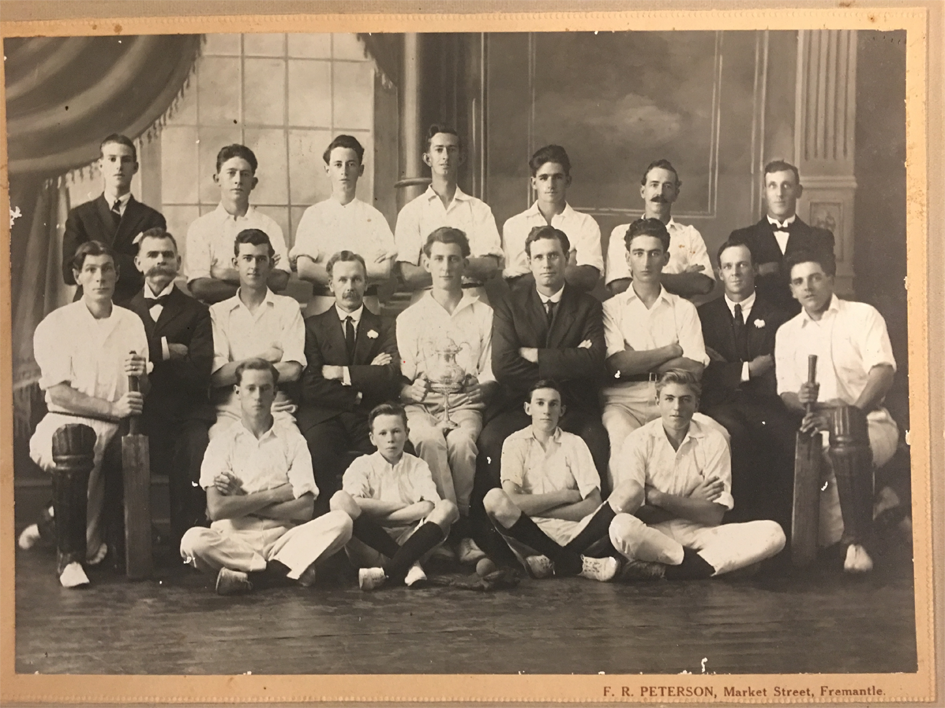
The first Spartan Premiership photo, from 1922/23. Incredibly, the trophy pictured centre (held by captain Reg Prince) can be found on prime display inside our trophy cabinet!

1923/1924 Season
| President: | Mr. S. Thomson (4th Year) |
| Senior Vice President: | Mr. J. Jarvis (1st Year) |
| Junior Vice President: | Mr. R. Prince (1st Year) |
| Secretary: | Mr. J. Vaughan (1st Year) |
| Treasurer: | Mr. J. Vaughan (5th Year) |
This season resulted in a third placing with the most impressive performance coming when they dismissed Scots for just 6! All ten wickets taken for only six runs! Bill Meyer and Bub Jarvis took all ten wickets between them.
Incidentally, the Spartan Football Club (Australian Rules) finished tenth out of ten teams in the Suburban Football League.

1924/1925 Season – The Senior Matting Association
| President: | Mr. S. Thomson (5th Year) |
| Senior Vice President: | Mr. P. Jarvis (1st Year) |
| Junior Vice President: | |
| Secretary: | Mr. J. Vaughan (2nd Year) |
| Treasurer: | Mr. J. Vaughan (6th Year) |
For various reasons, the Club transferred to the Senior Matting Association for the 1924/1925 season, where they finished third out of six teams, with their worst performance being against South Fremantle when they could only muster 23 and 20 in reply to South’s 8 for 76.

1925/1926 Season – Our Second Premiership
& Return To The Churches Association
| President: | Mr. S. Thomson (6th Year) |
| Senior Vice President: | Mr. P. Jarvis (2nd Year) |
| Junior Vice President: | |
| Secretary: | Mr. A. Meyer (1st Year) |
| Treasurer: | Mr. A. Gracie (1st Year) |
This season saw the Spartans back in The Churches Association, and we marked our return by defeating the Richmond Cricket Club in the Grand Final!
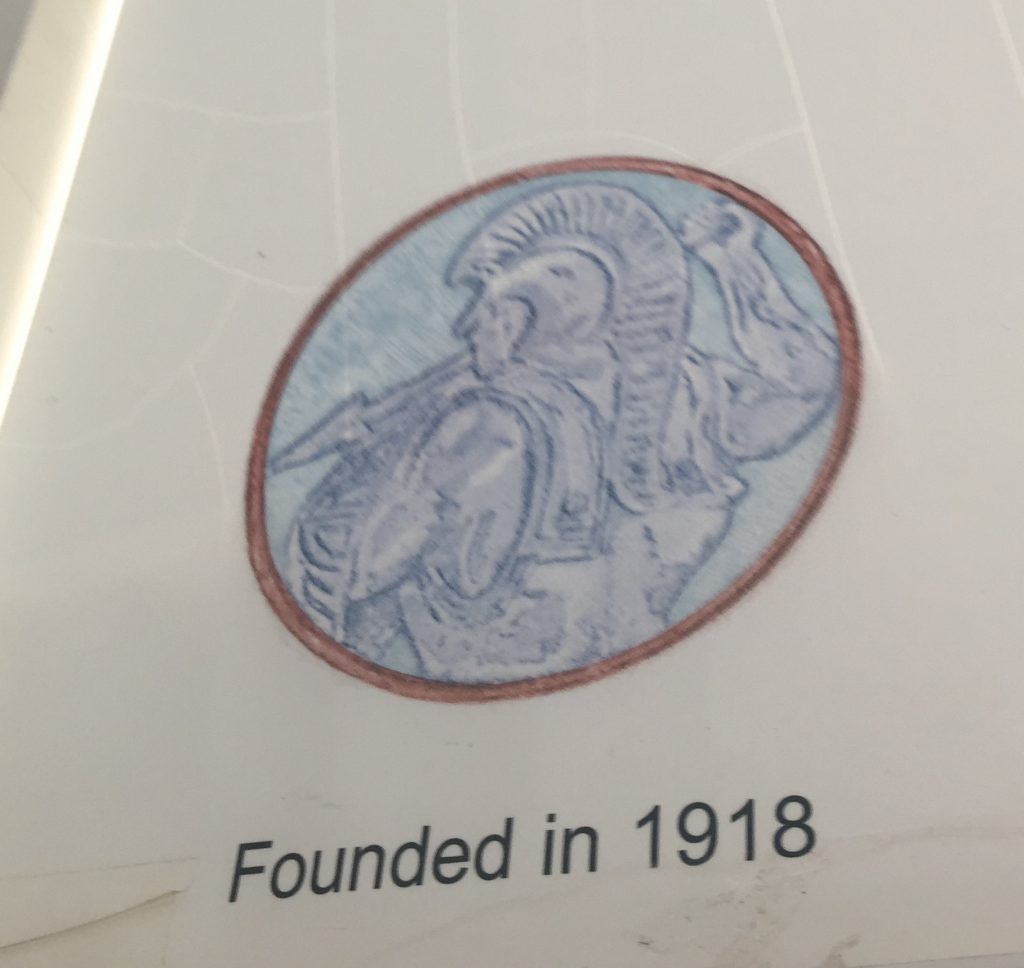
One of the earliest logos of the Spartan Cricket Club, although it was never used in a formal capacity.
The Club captain was now Bob Kirk, whose all-round performances in the years between the two World Wars must rank him amongst the finest players to have ever represented the Club.
The exact makeup of the Premiership side is not known, but the fourteen players who appeared in the Premiership photo were: W. Meyer, K. Stenhouse, F. Hood, L. Mudge, R. Anderson, P. Fiddament, A. Jarvis, R. Kirk (Captain), A. Meyer, A. Gracie, R. Thomson, R. Hickmott, E. Onions, R. Mudge.
By this time Fremantle was serviced by a most interesting and outspoken newspaper known as The Fremantle Advertiser, a news sheet that didn’t seem to care what it said, or who it might upset. An extract dated the 22nd August 1925 went as follows:
Discouraging Cricketers – No Facilities For Practice.
An application from the Spartan Cricket Club for the use of a practice wicket at the oval on Tuesdays and Thursdays was refused on the grounds that the club belonged to a fourth rate association.
The Editor’s footnote to the item said the following;
Obviously, the council intend them to remain fourth rate by denying them the facilities for improving their standards.
Subsequently, the Club was offered training facilities at Richmond Raceway in East Fremantle!

1926/1927 Season
| President: | Mr. S. Thomson (7th Year) |
| Senior Vice President: | Mr. P. Jarvis (3rd Year) |
| Junior Vice President: | |
| Secretary: | Mr. A. Meyer (2nd Year) |
| Treasurer: | Mr. A. Gracie (2nd Year) |
A highlight of the 1926/1927 season was a hat-trick taken by the East Fremantle football legend Bub Jarvis. Bub’s brother Aub took 9 for 11 and 4 for 49 in the semi-final against Saint Peter’s, but it was to no avail as the opposition won the game.

1927/1928 Season – Churches Decline
| President: | Mr. S. Thomson (8th Year) |
| Senior Vice President: | Mr. P. Jarvis (4th Year) |
| Junior Vice President: | |
| Secretary: | Mr. A. Meyer (3rd Year) |
| Treasurer: | Mr. A. Gracie (3rd Year) |
The 1927/28 season saw the standards of the Churches Association begin to decline as it became more of a competition for junior players, with the main focus being on the colts (under-21) sides.

1928/1929 Season – Association Collapse
| President: | Mr. S. Thomson (9th Year) |
| Senior Vice President: | Mr. P. Jarvis (5th Year) |
| Junior Vice President: | |
| Secretary: | Mr. A. Meyer (4th Year) |
| Treasurer: | Mr. A. Gracie (4th Year) |
In following on from the previous season, the Churches Association had declined so significantly over the past twenty months that it became evident to the Spartan Cricket Club Committee that a change in association was needed in order to keep the Club playing.
On the field, the Club had performed exceptionally well, making the grand final and unfortunately finishing runners up at Fremantle Park.
In the 1928/29 Season, the Spartan Cricket Club finished runners up in the Grand Final. Above is a team photo from our First Grade (our only side at the time) from that season. (Thanks to Tim Allan!)
It is the off field workings that the 1928/29 season is best remembered for, and a need to change associations was now paramount to ensuring the future sustainability of the now ten-year-old Spartan Cricket Club.
Stuart Thomson, the President at the time (who was now into his ninth consecutive year at the helm), was pivotal in making the necessary arrangements for the change.
The Club would continue to be based at Fremantle Oval (click here to learn about our home ground history), but for the first time, would regularly play sides from outside the Church arrangements.
And so, on 17th October 1929, the Spartans joined The Fremantle and Districts Mercantile Cricket Association, where we would remain until 1996.
The Era In Review
And with that, the Spartan Cricket Club’s time as part of the Churches Association had come to an end, following a decade of very solid and successful performances.
The Spartan Cricket Club began in 1918 as a means for those returning from the First World War to reinvigorate themselves within society in the Fremantle area, and it quickly grew to being the leading club in its association.
Throughout the passage of time, the association began to show signs of wear, and it ultimately faltered with the Spartan Club’s departure in 1929, as we moved into the older and well-established Fremantle and Mercantile Districts Cricket Association.
There were many positives to take out of this era, including our first ever premiership, which was won by a solitary run on the back of wicketkeeper Eddie Saggers‘ hat-trick maiden in the final over!
With the Reverned Hibbert’s establishing of the Spartan Cricket Club in 1918, he certainly could have never anticipated the juggernaught that was created, a formidably successful, proud, and social Club that has lasted more than one hundred years.
This era saw the beginning of the Spartan Cricket Club, its first successes and premierships, and marked the start of an institution that exists to this very day. It has outlasted home grounds, clubhouses, and even associations, and thanks to the endearing and everlasting efforts of this period, the Club continues to grow in 2024.

Chapter Thanks:
A special thank you to Spartan legend Graeme Ashley for the countless hours he has spent in compiling the historical information regarding the Leeming Spartan Cricket Club and preparing it for our website. This incredible effort is part of what makes us the premier social sporting club south of the river.
Adapted and updated with new content for the new Leeming Spartan Website in August 2016 by Daniel Coombs. Last updated in June 2017.

Next Chapter (Chapter Two – 1929-1942)

The Spartan Cricket Club pictured with their first ever premiership.

© Leeming Spartan Cricket Club (2024), All Rights Reserved
This document is for knowledge and viewing purposes only, and is therefore not to be copied or reused in any form without the express written consent of the Leeming Spartan Cricket Club (Inc.).
The Leeming Spartan Cricket Club (Inc.) logo is a copyright of the Leeming Spartan Cricket Club (Inc.) (ABN 24 114 629 534) and is not to be used for commercial purposes without express written permission from the Leeming Spartan Cricket Club (Inc.).


